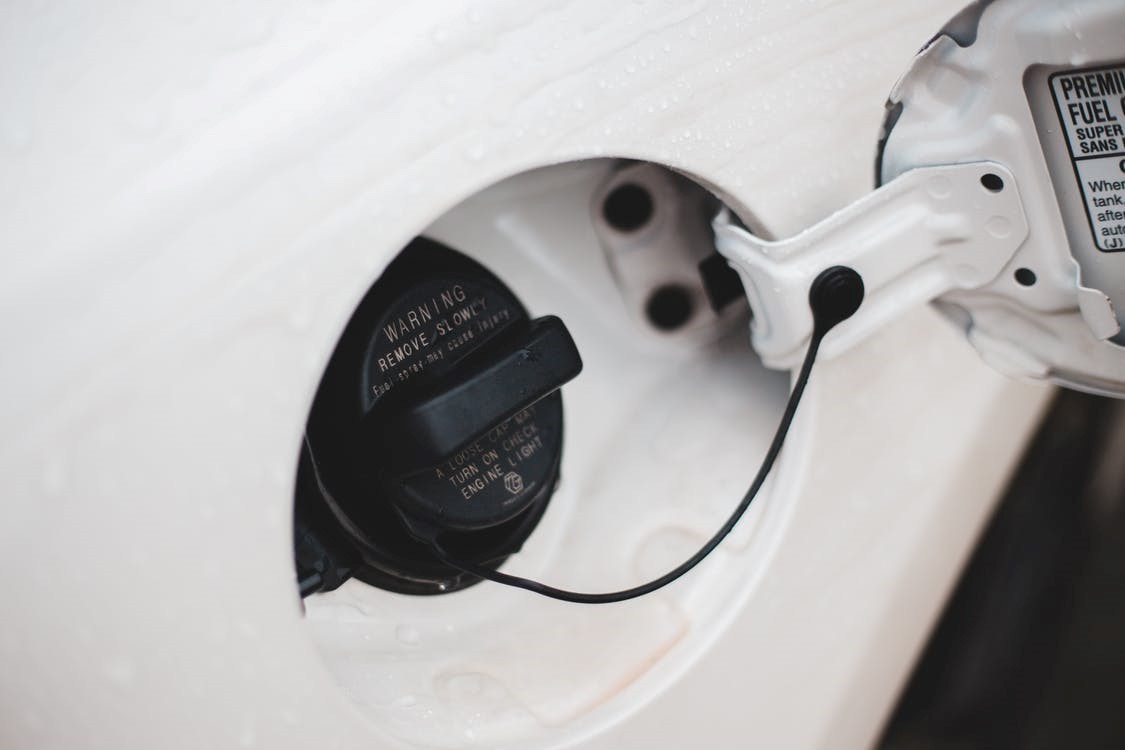Choosing the right fuel for your car can be confusing, especially with the variety of options available at gas stations. Whether you’re a new driver or just got a new car, understanding what type of gas your vehicle needs is crucial. Putting the wrong fuel can lead to engine problems and costly repairs. This guide will walk you through simple steps to determine the correct fuel for your car and ensure its optimal performance.
Check the Inside of Your Fuel Door
Image showing a car’s fuel door with a sticker indicating the recommended fuel type.
The first and easiest place to check for your car’s fuel requirement is the inside of the fuel door. This is the small flap that covers the fuel cap. To open it, some cars have a lever inside the cabin, usually on the driver’s side floor, while others might open with a simple push or pull on the door itself. Once open, look for a sticker. This sticker usually clearly states “Unleaded Fuel Only” or “Diesel Fuel”. This is a quick and reliable way to know the basic fuel type your car needs. However, keep in mind that these stickers can sometimes fade, peel off, or be missing on older vehicles. If you can’t find or clearly read the sticker, don’t worry, there are other ways to find out.
Consult Your Owner’s Manual
Image of a car owner’s manual, emphasizing its importance for vehicle information.
If the fuel door sticker is not available or legible, your car’s owner’s manual is your next best resource. This manual is packed with detailed information about your specific vehicle, including the recommended fuel type. Look through the index for sections like “Fuel,” “Fuel Recommendations,” or “Gasoline.” This section will clearly specify whether your car requires unleaded gasoline or diesel, and it might also provide information on the recommended octane rating. The owner’s manual is a comprehensive guide tailored to your car model, making it a highly reliable source for this information.
Contact Your Vehicle Manufacturer
Image of a person making a phone call, representing contacting the car manufacturer for information.
As a last resort, or if you want to be absolutely certain, you can directly contact your vehicle’s manufacturer. Their customer support line is equipped to answer questions about your car, including the correct fuel type. When you call, be ready to provide details about your car, such as the make, model, and year. You can usually find the manufacturer’s customer service number in your owner’s manual or by searching online for “[Your car brand] customer service number.” A customer service representative will be able to provide you with the accurate fuel information based on your vehicle’s specifications.
Understanding Fuel Options: Unleaded vs. Diesel and Octane Ratings
Image showcasing various fuel pump options at a gas station, emphasizing the choices available.
At the gas station, you’ll typically see options like “Regular,” “Plus,” and “Premium” for gasoline, along with diesel fuel. These gasoline options refer to different octane ratings, indicated by a number on the pump. Octane rating measures the fuel’s stability and its ability to prevent engine knocking or pinging. Higher octane fuels like premium are designed for engines that require them for optimal performance, but using them in a car that doesn’t need premium fuel generally offers no benefit.
Diesel fuel is significantly different from gasoline and is meant for diesel engines only. Putting diesel in a gasoline car, or vice versa, can cause serious engine damage. Diesel pumps are often separated, but always double-check the labels to ensure you are selecting the correct fuel. Using the wrong fuel can lead to engine clogging, starting problems, and even permanent damage.
In Conclusion
Knowing what type of gas your car takes is essential for maintaining its health and performance. Always start by checking your fuel door sticker. If it’s not there or unclear, refer to your owner’s manual. For absolute certainty, contacting your car manufacturer is a reliable option. Understanding the different fuel types and octane ratings will help you make informed decisions at the pump and keep your car running smoothly for years to come. For more helpful car tips and information, visit cars.edu.vn.

